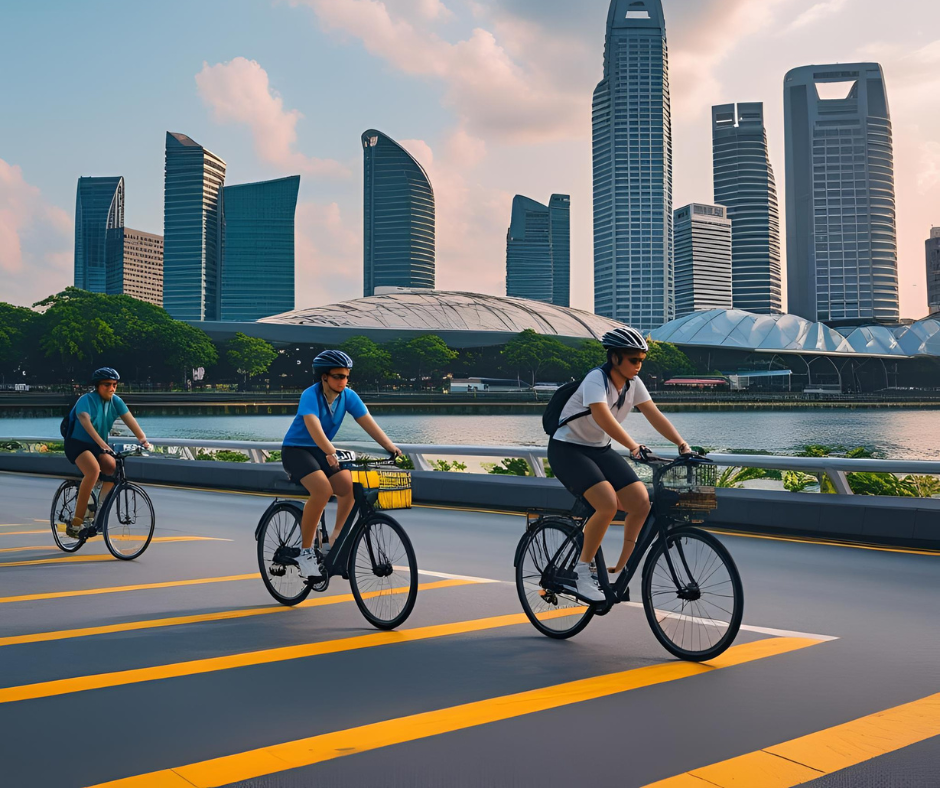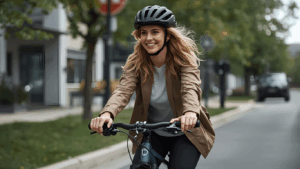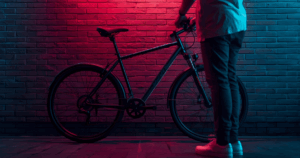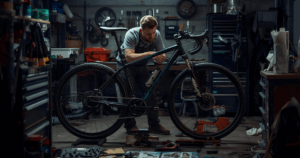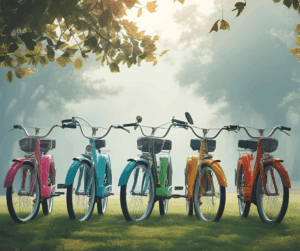If you’re new to cycling in Singapore, understanding the bike rules is essential for a safe, enjoyable, and stress-free experience. Singapore’s urban landscape is becoming increasingly bike-friendly, but to truly enjoy the vibrant cycling culture, every rider must first familiarize themselves with the regulations that keep both cyclists and pedestrians safe. Whether you’re commuting, cycling for leisure, or picking up the sport, this guide will help you navigate the city’s bike rules with confidence.
Why Cycling Rules Matter in Singapore
Singapore is known for its efficiency, cleanliness, and orderliness, and the same applies to its cycling infrastructure. The bike rules here aren’t just formalities — they’re designed to protect all road users, including cyclists, motorists, and pedestrians. By following these rules, you contribute to a smoother traffic flow, reduce accidents, and help integrate cycling as a vital part of Singapore’s transport ecosystem.
Failing to adhere to bike rules can result in fines, penalties, or worse, accidents. The government and various agencies like the Land Transport Authority (LTA) have made concerted efforts to promote a cycling-friendly environment, but personal responsibility remains crucial. Thus, knowing your bike rules isn’t just about compliance — it’s about respect for your fellow road users.
Where You Can Ride: Paths and Roads
One of the primary bike rules to note is where you are legally allowed to ride. In Singapore, cyclists can use:
- Park Connector Networks (PCNs): These are dedicated cycling and jogging paths connecting various parks.
- Shared Paths: Sidewalks marked for shared use between pedestrians and cyclists.
- On-Road Cycling Lanes: Some roads have dedicated cycling lanes.
- Roads without Cycling Lanes: You are allowed to cycle on roads that do not have specific cycling paths, but caution is mandatory.
You must avoid expressways and tunnels as part of the bike rules, as bicycles are strictly prohibited in these high-speed traffic zones. Riding on expressways not only endangers you but also other motorists.
Basic Equipment You Must Have
Another aspect of the bike rules concerns your equipment. According to LTA regulations, every cyclist must ensure their bicycle is equipped with:
- Front White Light & Rear Red Light: These must be visible from a distance of at least 200 meters when cycling at night.
- Working Brakes: Both front and rear brakes must be operational.
- Bell or Horn: A functional bell or horn is necessary to alert pedestrians or other cyclists.
- Helmet: While not legally required for every cyclist, wearing a helmet is strongly advised, especially if you’re riding on the roads.
Failure to comply with equipment bike rules can result in fines or confiscation of the bicycle if found to be unsafe.
Hand Signals and Road Etiquette
Hand signals are a vital part of bike rules when cycling on roads. They help communicate your intentions to other road users. Some common signals include:
- Left Turn: Extend your left arm straight out to signal a left turn.
- Right Turn: Extend your right arm straight out.
- Stop or Slow Down: Extend your left arm downward with your palm facing backwards.
Proper signaling helps prevent misunderstandings that could lead to accidents. According to Singapore’s bike rules, failing to signal is considered negligent behavior, especially on busy roads.
Speed Limits and Control
Speed control is another critical area under bike rules. Cyclists must ride at a controlled speed, especially on shared paths where pedestrians are present. The general guideline suggests:
- Shared Paths: Maximum 10 km/h
- Cycling Paths: Maximum 25 km/h
- Roads: Follow general traffic speed limits but ride cautiously.
Exceeding these limits can not only endanger others but also violate the established bike rules, which may result in fines.
Safe Passing Distances
When overtaking pedestrians or other cyclists, Singapore’s bike rules stipulate maintaining a safe distance — typically at least one meter. This precaution minimizes the risk of collisions, especially on narrow paths.
Always announce your intention to overtake by ringing your bell or using a polite verbal alert. This respectful adherence to bike rules fosters a harmonious shared space, particularly on popular Park Connector Networks.
Riding in Groups
Group cycling is increasingly popular in Singapore. The bike rules for group cycling are explicit:
- Maximum Two Abreast: Cyclists can ride two abreast on roads unless road conditions are unsafe or traffic is heavy.
- Single File on Narrow Roads: If the road is narrow or there is heavy traffic, riders must switch to single file.
- Formation: Riders should maintain formation discipline to avoid endangering themselves or others.
Ignoring these bike rules can cause traffic congestion or accidents, which is why seasoned cyclists always emphasize discipline in group rides.
Mobile Phones and Distractions
Using mobile phones or other devices while riding is strictly discouraged and is part of the official bike rules. Handling electronic devices distracts you from the road and significantly increases the risk of accidents. If you need to check your phone or GPS, pull over safely to do so.
Some cyclists opt for phone mounts for navigation, which is acceptable as long as the rider does not interact with the device while cycling.
Alcohol and Cycling
Singapore’s strict stance on drink-driving extends to cycling. According to bike rules, riding under the influence of alcohol or drugs is an offence. Impaired cycling not only puts you at risk but also others, especially on shared paths and roads.
If caught cycling under the influence, penalties can be severe, including fines and legal prosecution under public endangerment laws.
Parking Your Bicycle Properly
Another often overlooked part of bike rules involves parking. Always park your bicycle at designated bicycle parking areas to avoid obstructing pathways, entrances, or public spaces. Improperly parked bicycles may be impounded or fined by authorities.
With the rise of bike-sharing services, the government has introduced stricter bike rules for shared bikes, including geo-fencing that restricts where bikes can be parked. Users should be mindful of these regulations to avoid penalties.
Mandatory Insurance for E-Bikes and PABs
If you’re riding a Power-Assisted Bicycle (PAB) or e-bike, additional bike rules apply:
- Mandatory Registration: All PABs must be registered with the LTA.
- Rider Training and Certification: Riders must pass a theory test before operating PABs.
- Insurance: Liability insurance is mandatory for commercial riders using PABs.
These specialized bike rules ensure that higher-speed e-bikes are used responsibly on public roads and cycling paths. Whether you ride a traditional bicycle or an e-bike, being familiar with these rules enhances your safety and that of others.
Fines and Penalties
Understanding the penalties associated with breaking bike rules can be a strong deterrent against non-compliance:
- Riding on Expressways: Fine up to $1,000 or up to 3 months imprisonment.
- Failure to Use Lights at Night: Fine up to $1,000.
- Not Wearing Helmets (where applicable): Fine up to $1,000.
- Using Mobile Phones While Riding: Fine up to $1,000 or up to 3 months imprisonment.
These penalties underscore the seriousness of the bike rules, reflecting Singapore’s zero-tolerance policy on unsafe cycling.
Education and Awareness Campaigns
Singapore continually promotes awareness about bike rules through public education campaigns, such as the LTA’s Safe Cycling Programme. Schools, community centres, and workplaces often host workshops to teach cyclists about safe practices.
Additionally, cycling groups often take the initiative to educate new riders about proper conduct, ensuring that the community self-regulates alongside government efforts.
Tips for Foreigners and Tourists
For tourists or expatriates new to Singapore, it’s crucial to learn the local bike rules before venturing out. Many countries have differing standards, and ignorance of Singapore’s specific rules is not a valid excuse if caught violating them.
Rental services often provide quick guides on bike rules, and it’s advisable to go through these thoroughly before riding. Respect for local customs and regulations ensures you not only enjoy your ride but also maintain the city’s esteemed orderliness.
Summary of Key Bike Rules
Here’s a quick recap of the essential bike rules in Singapore:
- Ride only on permitted paths and roads; avoid expressways and tunnels.
- Equip your bike with lights, bells, and brakes.
- Always wear a helmet when on the road.
- Use proper hand signals for turns and stops.
- Respect speed limits on shared paths and roads.
- Maintain safe distances when overtaking.
- Ride in single file where necessary and avoid riding more than two abreast.
- Do not use mobile phones while riding.
- Never ride under the influence of alcohol or drugs.
- Park bicycles only in designated areas.
By adhering to these bike rules, you not only safeguard yourself but also contribute positively to Singapore’s thriving cycling culture.
Final Thoughts
Cycling in Singapore is more than just a form of exercise or commute — it’s a way to explore the city’s greenery, parks, and urban landscape. However, the experience is only enjoyable if everyone observes the established bike rules. By being a responsible cyclist, you play a part in fostering a safe and respectful community for all road users.
Whether you’re a beginner or someone getting back into cycling, knowing the bike rules is your first step toward an enriching and safe cycling journey in Singapore. Equip yourself with knowledge, follow the rules by LTA, and you’ll find that cycling is one of the most rewarding activities this vibrant city has to offer.
